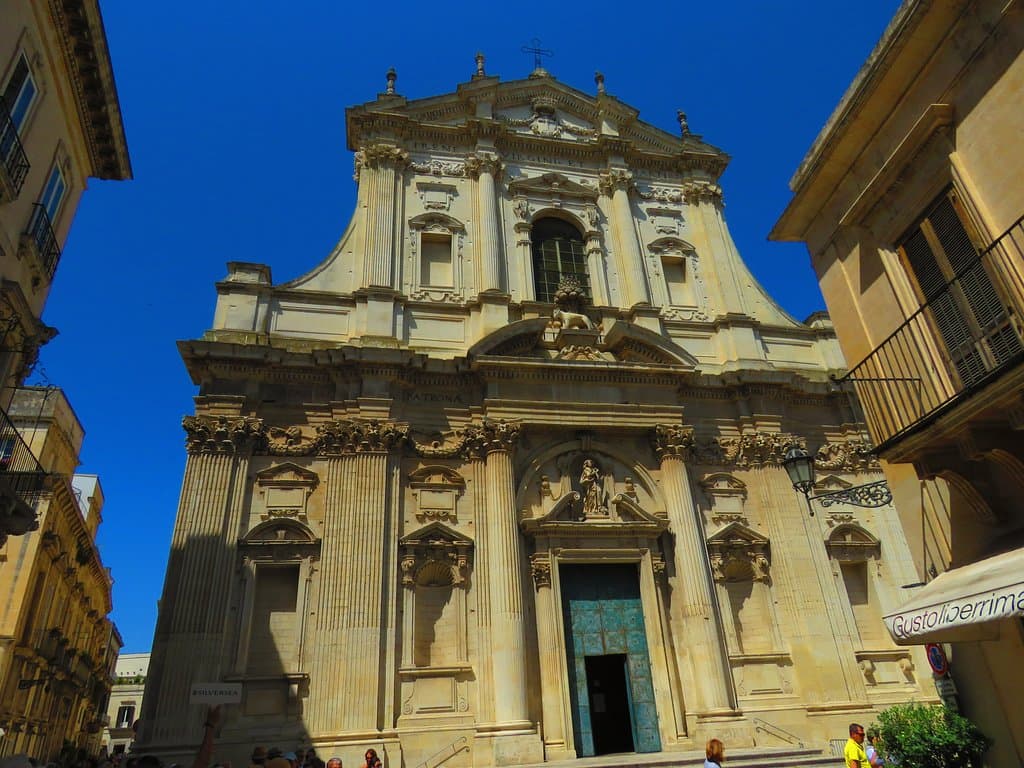
Chiesa di Sant'Irene
A magnificent Baroque church in Lecce, Italy, offering free entry and a rich tapestry of history and art.
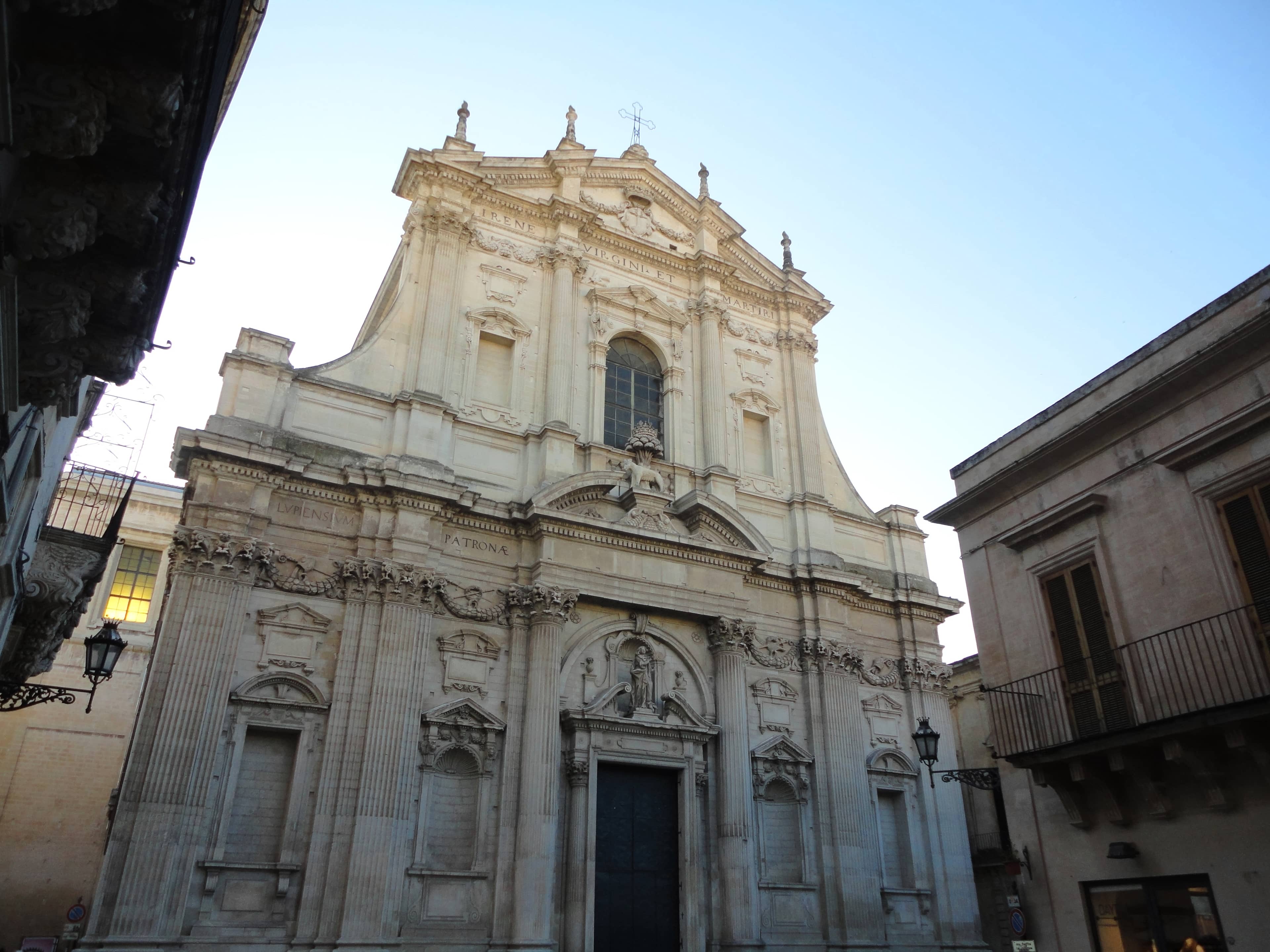
Highlights
Must-see attractions

Social
From TikTok & Reddit
Best Time
Fewer crowds, peaceful atmosphere

Chiesa di Sant'Irene
Best Time
Fewer crowds, peaceful atmosphere

Highlights
Must-see attractions
A magnificent Baroque church in Lecce, Italy, offering free entry and a rich tapestry of history and art.
"OMG, the best FREE to enter church in Lecce. You will not be disappointed. Wow"
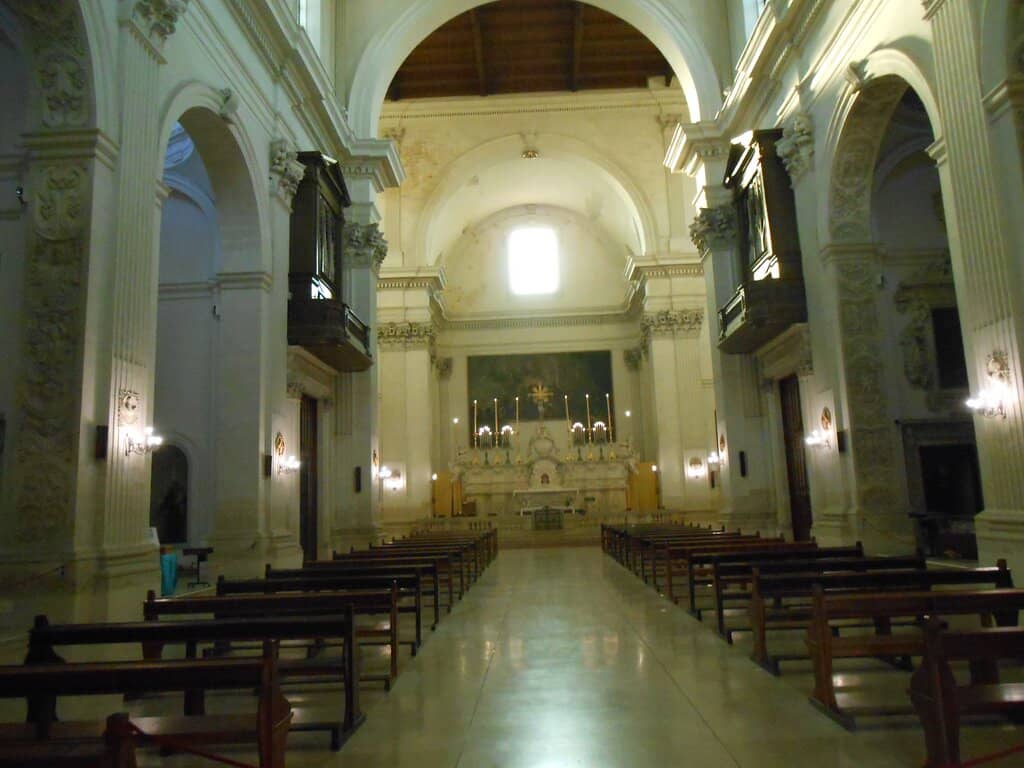
🎯 Free Admission, Donate!
Entry is free, but donations are highly encouraged to support this beautiful church. :heart:
🚶♀️ Explore the Chapels
Don't miss the communicating chapels on the sides, each with unique altars and artwork. :pray:
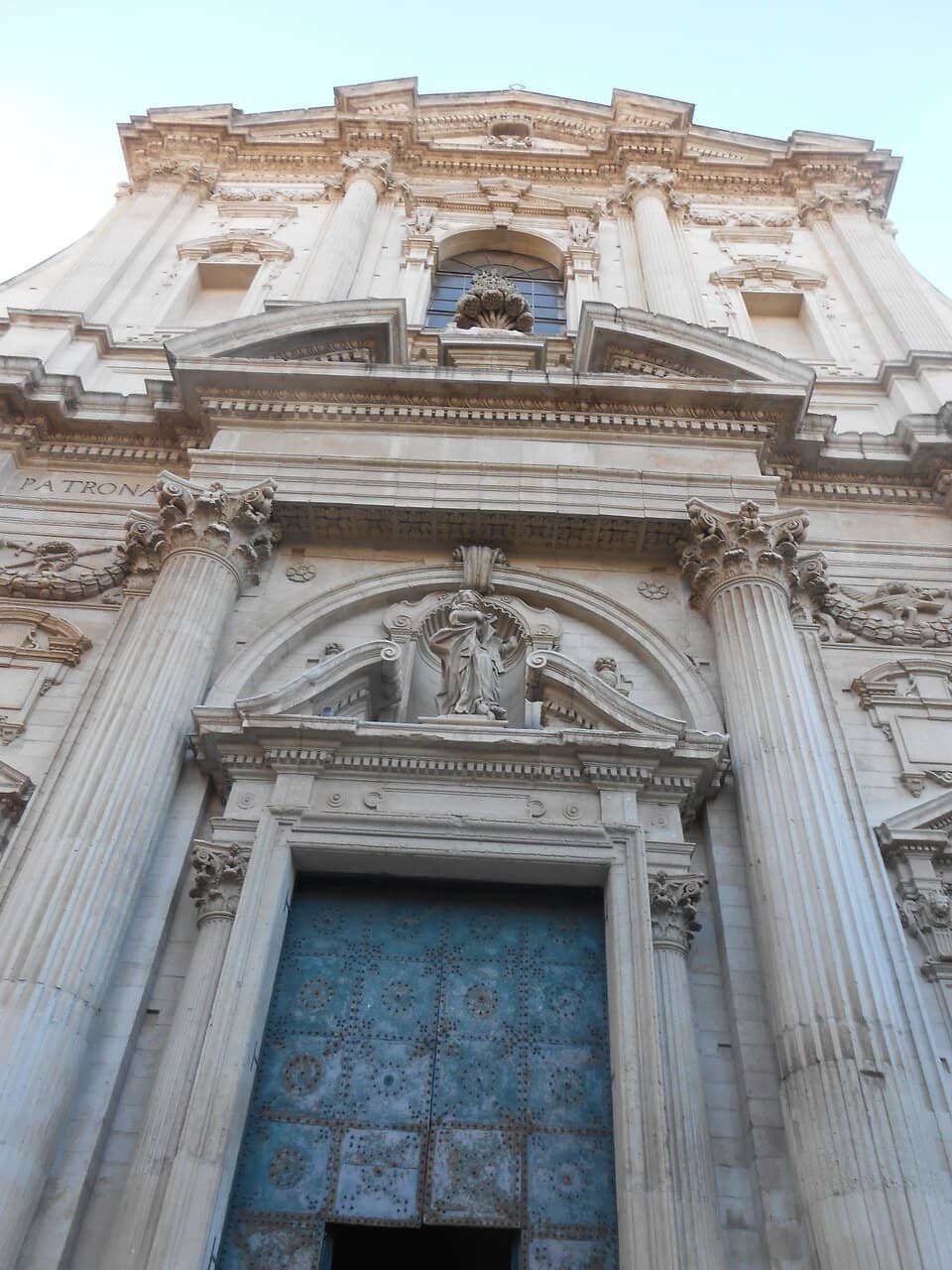
Highlights
Discover the most iconic attractions and experiences

Baroque Facade
Exterior
A stunning double-order facade with pilasters, festoons, and a prominent statue of Saint Irene.
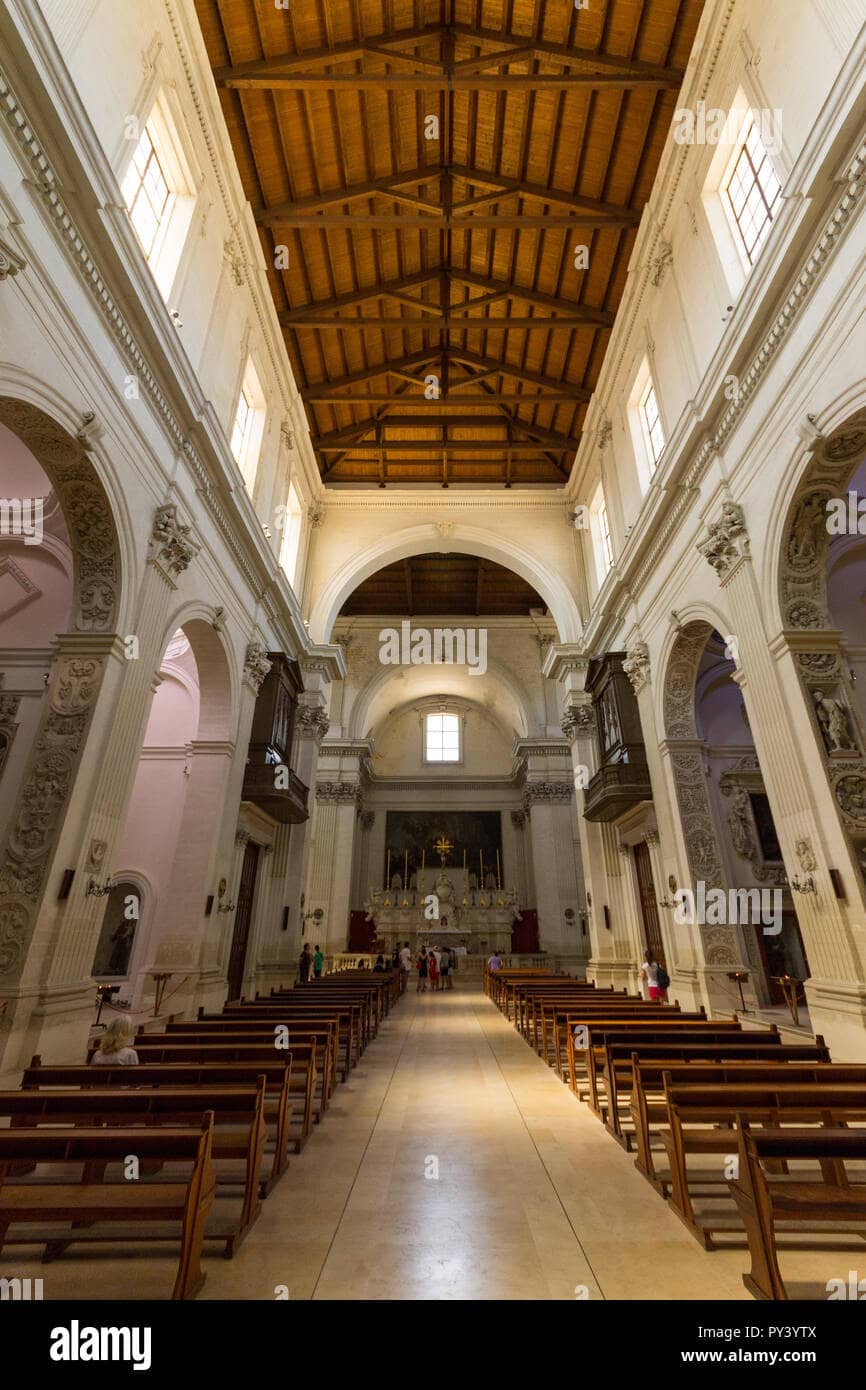
Latin Cross Interior
Interior
A single nave with deep chapels, elliptical domes, and numerous altars dedicated to various saints.

Main Altar and Apse
Apse
Features a main altar altered in 1753 and a captivating painting, 'The Transport of the Holy Ark' by Oronzo Tiso.
Plans like a pro.
Thinks like you
Planning Your Visit
Free Entry, Generous Donations Appreciated
Architectural Marvels & Historical Significance
Best Times
Insider Tips
from TikTok, Instagram & Reddit
🎯 Free Admission, Donate!
Entry is free, but donations are highly encouraged to support this beautiful church. :heart:
🚶♀️ Explore the Chapels
Don't miss the communicating chapels on the sides, each with unique altars and artwork. :pray:
Going to Lecce tomorrow for a day trip. What are the must see attractions?
📸 Photography is Welcome
Capture the stunning Baroque details, but be respectful of ongoing services. :camerawithflash:
📚 Learn the History
Read up on its construction and historical significance before or during your visit. :book:
Tips
from all over the internet
🎯 Free Admission, Donate!
Entry is free, but donations are highly encouraged to support this beautiful church. :heart:
🚶♀️ Explore the Chapels
Don't miss the communicating chapels on the sides, each with unique altars and artwork. :pray:
📸 Photography is Welcome
Capture the stunning Baroque details, but be respectful of ongoing services. :camerawithflash:
📚 Learn the History
Read up on its construction and historical significance before or during your visit. :book:
What Travellers Say
Reviews Summary
Visitors consistently praise Chiesa di Sant'Irene as a stunning and historically significant Baroque church, often highlighting its free entry as a major draw. Many are impressed by the architectural grandeur and the rich collection of art within its chapels and apse. While some note its relative simplicity compared to other churches, the overall sentiment is one of admiration for its beauty and historical value.
"OMG, the best FREE to enter church in Lecce. Please donate generously. You will not be disappointed. Wow"
Austin Ambrose
"The church was built starting from 1591 on the project of the Francesco Grimaldi from Turin and was completed in 1639, the year of the consecration by the Bishop of Brindisi.
The church experienced important historical events: in 1797 it was visited by King Ferdinand IV of Bourbon; in October 1860 it hosted the plebiscite operations to decide the yes of Lecce to enter the Kingdom of Italy. In 1866 the annexed convent of the Theatines was suppressed, but the church remained open for worship.
The parish community celebrates its patron Irene on May 5th.
The building refers to the model of the Basilica of Sant'Andrea della Valle in Rome, where Grimaldi himself worked. The façade is made up of a double order system, punctuated by overlapping pilasters connected by festoons. The columns are spaced out in the lower order by empty niches and cartouches and in the upper order by a large window. The central space of the lower order houses the portal, surmounted by the stone statue of Saint Irene, by Mauro Manieri from 1717. Above the string course frame stands the civic emblem of the city of Lecce. The façade is crowned by a triangular tympanum bearing the insignia of the order of the Theatines. The Latin dedication to the patron saint Irene virgini et martiri (Irene virgin and martyr) is engraved on the entablature.
The interior has a Latin cross plan, with a single nave open at the sides by three deep chapels communicating with each other and characterized by elliptical domes. On the left side there are the altars of St. Stephen, which houses the painting with the Stoning of St. Stephen, by Antonio Verrio, of the Crucifix and of the Virgin of the Good Council.
In the left arm of the transept there are three altars: the altar of Saint Oronzo, built around the middle of the seventeenth century by Francesco Antonio Zimbalo, uncle of Giuseppe Zimbalo; the altar of Saint Irene (1639) which houses nine busts of saints which each contain the relics of the depicted religious, while above is the statue of Saint Irene surmounted by the coat of arms of Lecce; the altar of the Holy Family built in 1672.
The apse houses the main altar altered in 1753. On the wall is a painting depicting The Transport of the Holy Ark, a masterpiece by Oronzo Tiso.
In the right arm of the transept there are three other altars: the altar of the Guardian Angel dating back to 1700; the altar dedicated in 1651 to St. Gaetano of Thiene by the archbishop of Otranto Gaetano Cassa, which houses the oil painting depicting the founder of the Teatini order, created by Filippo Maria Galletti [1]; the altar of Saint Andrew Avellino, in the Rococo style.
In the chapels on the right side there are the altars of St. Charles Borromeo, of the archangel Michael, built by Cesare Penna in 1642, and the altar of the Souls of Purgatory with a recent painting by Luigi Scorrano.
The church's sacristy houses other paintings, including that of the Madonna della Libera."
Huykyung “Grace” Byun
"Beautiful church, worth a visit"
John McIlvaine
What People Like
What People Dislike
Frequently Asked Questions
🚇 🗺️ Getting There
Chiesa di Sant'Irene is located in the heart of Lecce's historic center. It's easily accessible on foot if you're staying nearby. If arriving by car, be aware that the historic center is largely pedestrianized, so parking might require a short walk from designated lots outside the ZTL (Limited Traffic Zone).
Parking in Lecce's historic center is limited. The closest public parking areas are typically outside the ZTL. Consider using a parking app to find available spots and check their proximity to the church.
While there aren't direct bus stops right at the church, Lecce's main bus station is within walking distance of the historic center. From there, you can navigate to Sant'Irene on foot.
🎫 🎫 Tickets & Entry
No, Chiesa di Sant'Irene offers free admission to all visitors. However, donations are gratefully accepted to help with the upkeep of this historic site.
The opening hours can vary, but it's generally open during daylight hours. It's advisable to check local listings or inquire nearby for the most up-to-date times, especially around holidays or special events.
Yes, the church is typically open on Sundays, though hours might be slightly adjusted. It's a popular spot for locals and tourists alike, so expect a moderate crowd.
Since entry is free, no advance booking is required. You can visit spontaneously during its opening hours.
📸 📸 Photography
Photography is generally permitted inside Chiesa di Sant'Irene for personal use. However, it's important to be respectful of any ongoing religious services and avoid using flash photography, which can be disruptive.
The main altar with Oronzo Tiso's painting, the intricate details of the chapels, and the overall grandeur of the nave offer excellent photographic opportunities. The facade also makes for a striking exterior shot.
While generally allowed, avoid intrusive photography, especially during services. Some specific exhibits or areas might have temporary restrictions, so always observe signage.
🎫 🏛️ Onsite Experience
A visit to Chiesa di Sant'Irene can take anywhere from 30 minutes to an hour, depending on your interest in architectural details and history. It's a place to absorb the atmosphere and admire the artistry.
The main floor of the church is generally accessible. However, some older buildings may have uneven surfaces or steps. It's advisable to inquire locally about specific accessibility details if needed.
Chiesa di Sant'Irene is a prime example of Baroque architecture, with influences from Roman Baroque styles. Its facade and interior showcase the ornate and dramatic characteristics of this period.
Official guided tours might not be regularly scheduled. However, you can often find local guides in Lecce's historic center who can provide insightful tours that include the church. Alternatively, informational plaques may be available.
For Different Travelers
Tailored advice for your travel style
👨👩👧 Families with Kids
💰 Budget Travelers
❤️ Couples
Deep Dives
In-depth insights and expert knowledge
Architectural Grandeur: A Baroque Masterpiece
The interior follows a Latin cross plan, featuring a single nave that opens into three deep, communicating chapels on each side. These chapels are characterized by their elliptical domes, adding to the sense of grandeur and visual interest. Each chapel houses altars dedicated to various saints, showcasing a rich collection of religious art and historical artifacts. The careful design and execution reflect the opulence and dramatic flair characteristic of the Baroque period, making it a must-see for architecture enthusiasts.
A Tapestry of History and Art
The church's artistic treasures are equally compelling. The left arm of the transept houses altars like the Altar of Saint Oronzo, built by Francesco Antonio Zimbalo, and the Altar of Saint Irene, which contains relics of saints. The apse is home to the main altar, modified in 1753, and a masterpiece by Oronzo Tiso, 'The Transport of the Holy Ark.' The right arm of the transept features altars dedicated to the Guardian Angel, St. Gaetano of Thiene, and Saint Andrew Avellino. The chapels on the right side contain altars dedicated to St. Charles Borromeo, the Archangel Michael, and the Souls of Purgatory, further enriching the church's artistic narrative.


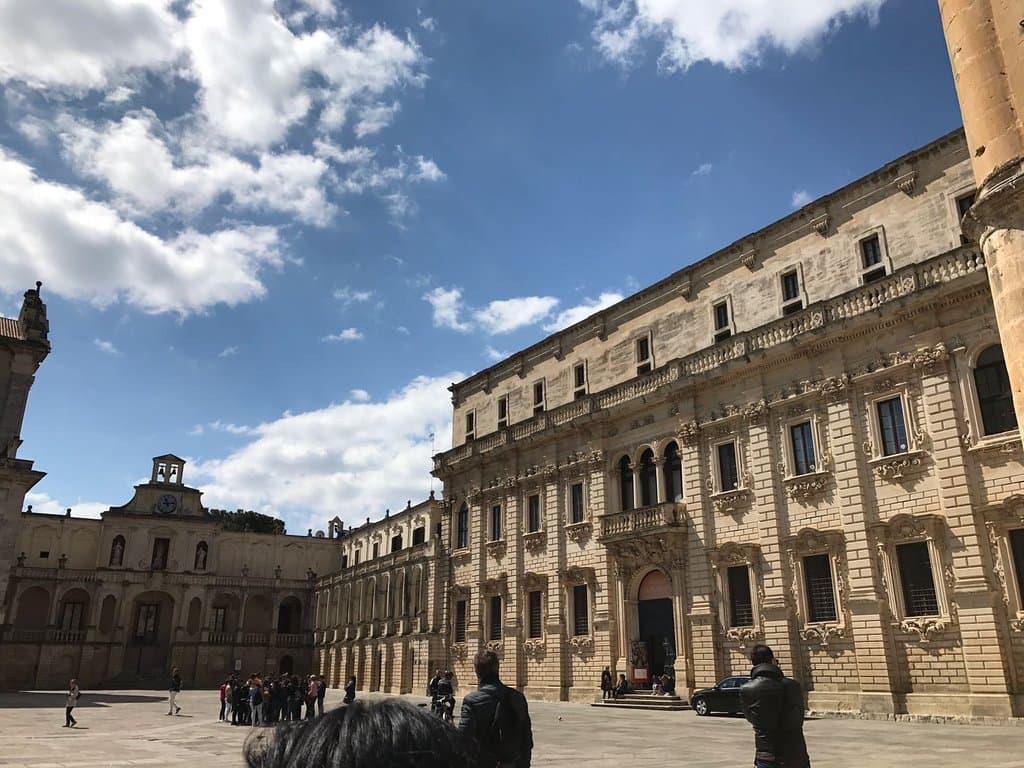

Social
from TikTok, Instagram & Reddit